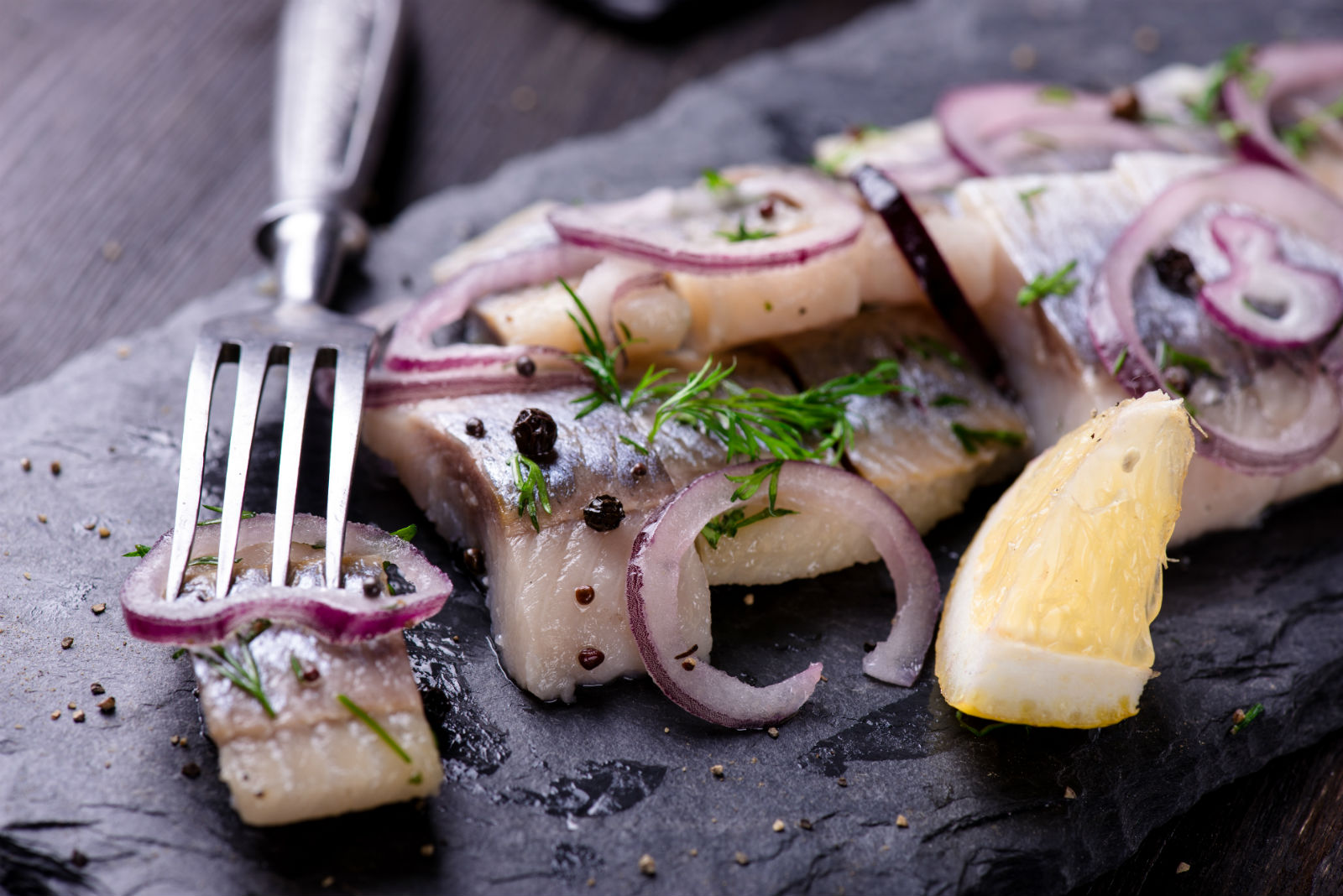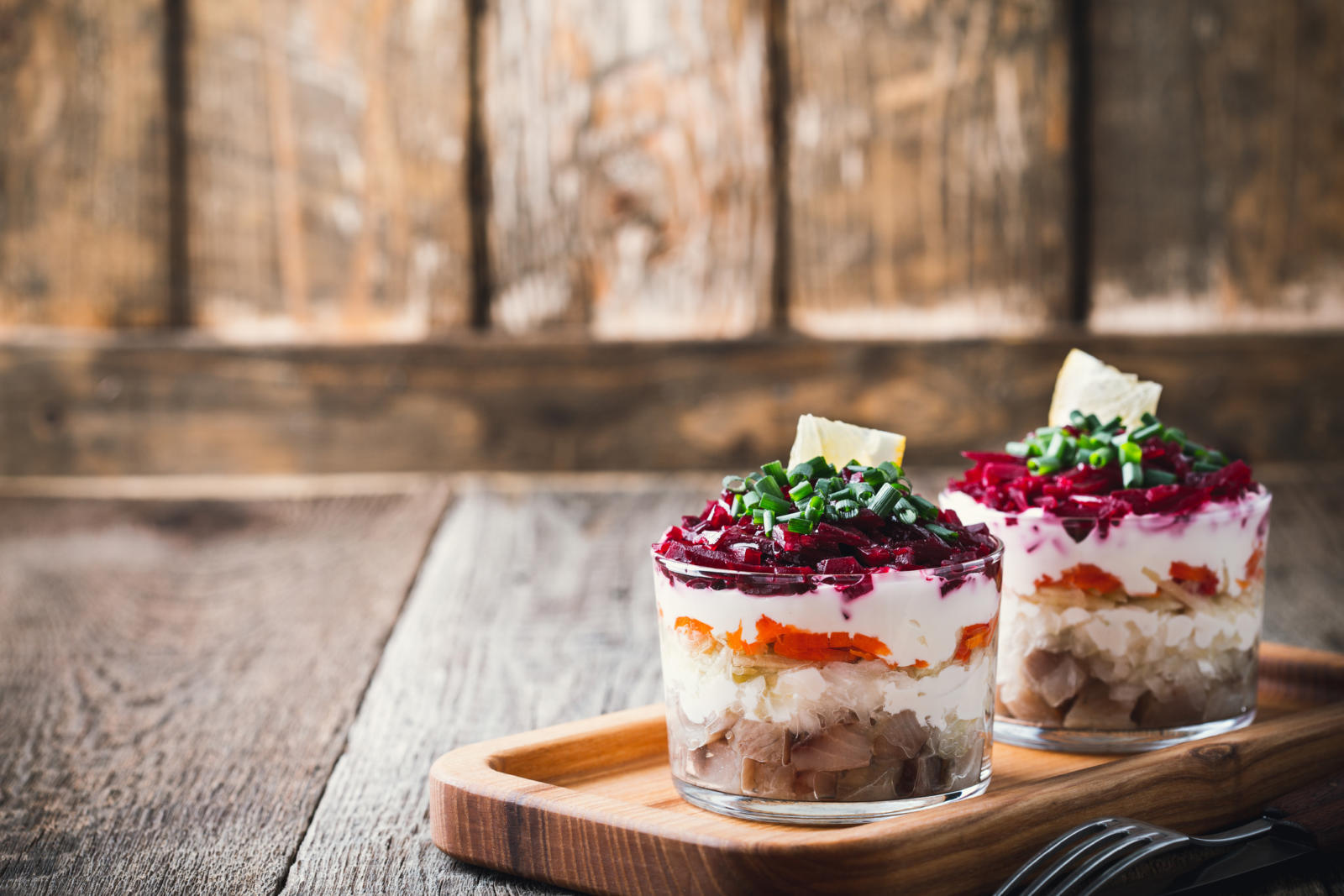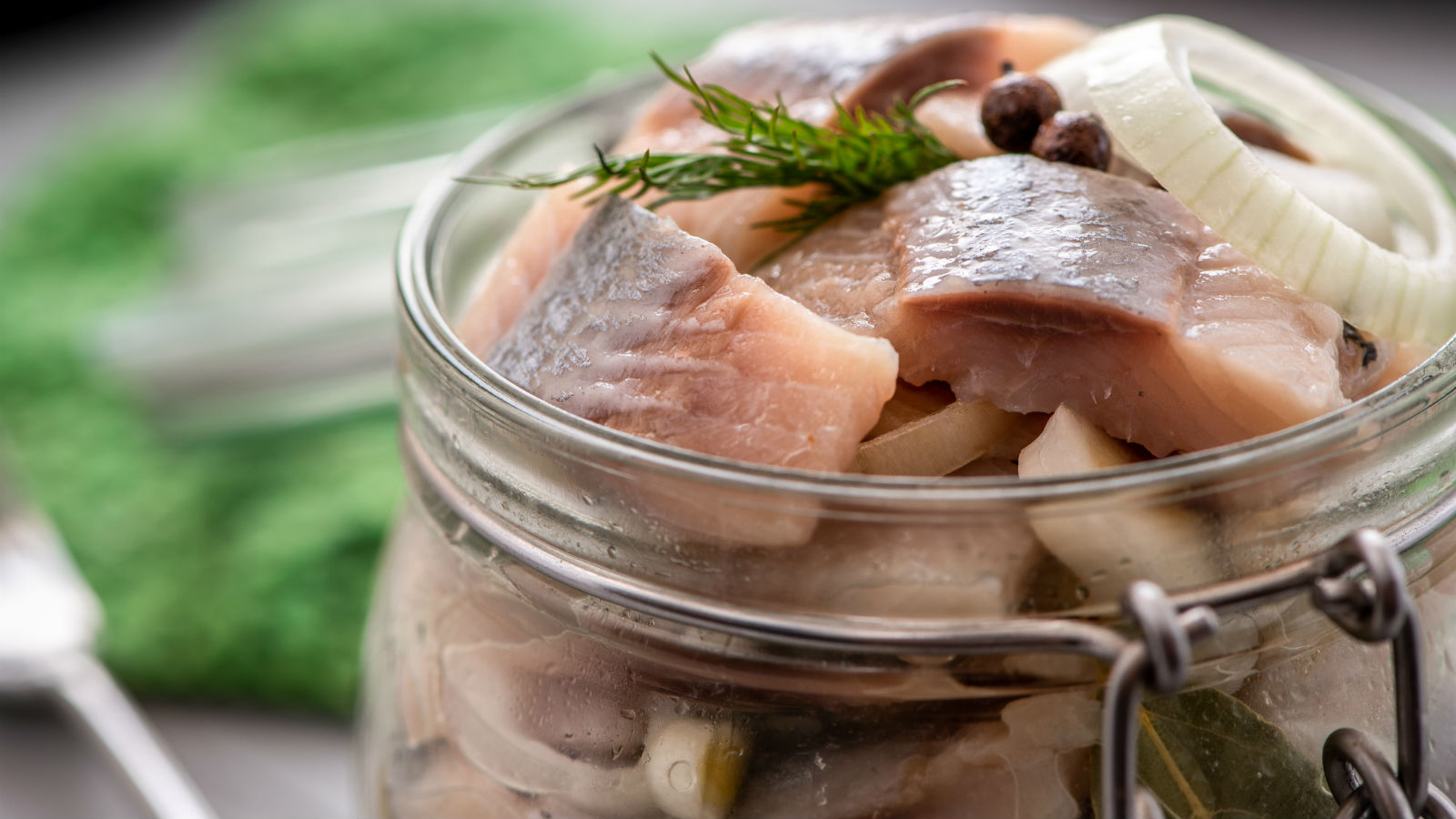Pity the poor pickled herring. The small preserved fish sold in jars in the refrigerated section of most delis gets no respect. I am an unabashed fan. I love its sweet and salty taste, alone or in a herring salad. I know I’m not the only one.
But I also know herring is a secret delight that some fans won’t even talk about in public. In many households, herring lovers are forced to sneak bites straight out of the jar by the light of the refrigerator when no one else is home. “My husband says it makes him gag,” confessed a herring lover who asked to remain anonymous.
Pickled herring never really got the passionate declarations of love Ashkenazi Jews reserve for bagels, lox, deli sandwiches, or even chopped liver. Its pale gray color and watery (but delicious!) brine also does it no favors when it comes to attracting first-time diners. But once you get hooked, there’s no going back.

The Nosher celebrates the traditions and recipes that have brought Jews together for centuries. Donate today to keep The Nosher's stories and recipes accessible to all.
Herring’s bad reputation among North American Jews is nothing new. In 1928, the Canadian Jewish Review bemoaned the younger generation’s disinterest in traditional observance and knew just where to place the blame. Noting that a Jewish girl’s club featured ice cream and ham sandwiches (thus breaking the laws of kashrut), editor F. F. Cooper wrote: “As to the ham sandwiches, well they are the logical downfall of a generation that knows not herring.” Cooper encouraged families to feed their children traditional Jewish dishes that “keep the stomach Jewish when the mind has wandered away.”
The history of herring and Jews goes back hundreds of years. As Miriam Borden noted in her piece for The Canadian Jewish News, herring first came to Jewish markets as early as the 15th century, when the Dutch salted fresh fish to preserve it for export to cities across Europe. Food historians say the Renaissance diet of Austrian Jews was made up of milk, butter, black bread, eggs, cheese, soup, vegetables, sauerkraut, rice, and herring.
The first Jewish fishmongers received the fish in barrels. They eventually became prominent herring traders, importing and transporting the fish to Germany, Poland, and Russia, then selling it in shops and from pushcarts. In the early 1900s, my uncle was one of those peddlers selling herring and other fish to Jewish families in Central Massachusetts.
Hawking pickled fish from a pushcart was also how one of the most famous herring purveyors came to be: Russ and Daughters have been selling herring, lox, and other Jewish dairy delights on New York’s Lower East Side for over 100 years. In 2013, owner Mark Russ Federman told the Haaretz that the original herring customer was first-generation Yiddish speaking immigrants. Now, a century later, it’s a younger, more diverse clientele that includes hip foodies from all over the world.
While, herring in wine or cream sauce are the traditional favorites, these days, new purveyors like The Rebbe’s Choice offer more contemporary flavors like jalapeño and honey-mustard Sriracha.

Purists maintain that the best way to eat herring is straight out of the jar with a thick slice of rye bread and butter. But this far from the only traditional way to enjoy the fish. Chopped herring salad, once a mainstay of Shabbat dinners and Jewish celebrations, is difficult, if not impossible to find, but not hard at all to make at home. Herring is combined with chopped eggs, Granny Smith apples, challah, and a little sugar. This recipe is closest to what most consider a traditional herring salad. (Note: it’s perfectly fine to substitute a jar of herring for the herring filets.)
Jews from the former Soviet Union have their own herring dish delightfully called Herring Under a Fur Coat, nicknamed shuba, which means fur coat in Russian. It’s a festive dish, served at celebrations such as New Year’s Eve and Jewish holidays, made up of layers of herring, shredded potatoes, beets, carrots, and eggs in between layers of mayonnaise.
Herring today isn’t stuck in the past, or on kiddush tables alone. Chefs and cookbook authors are creating new ways to enjoy herring that resonate with modern tastes. If the idea of creamed herring in a jar makes you nervous, why not whip up your own version with sour cream, Dijon mustard, and horseradish. New York Times food writer Melissa Clark updated herring for modern palates with her recipe for Pickled Herring and Apple Crostini with Dilled Ricotta — a deconstructed version of herring salad that’s perfect for entertaining friends. Clark and cookbook author Alison Roman both suggest serving herring as an hors d’oeuvre atop crunchy potato chips for a fresh variation on salt and vinegar flavored chips.



